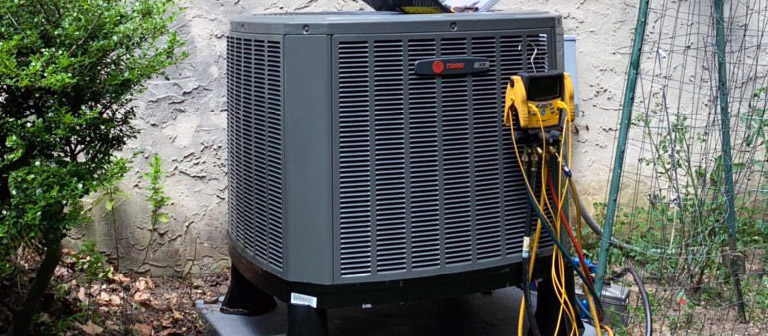Should You Upgrade to a Heat Pump?
An article for homeowners in the Arlington, Fort Worth and Dallas Metroplex area that discusses what a heat pump is for and the benefits of upgrading to a heat pump.
What are Heat Pumps Used for?
A heat pump is a unit that is installed on the outside of a home. Unlike the name suggests, a heat pump does more than just provide warm air inside a home. It also can provide cooling inside the home as well. During the colder months, a heat pump will pull the heat out of outdoor air and distribute it throughout the indoor air in a home. During warmer months, a heat pump will pull heat out of the indoor air to cool the home.
A heat pump does not actually create heat. As explained above it pulls the heat out of the air. This makes it exceptionally energy efficient when compared to furnaces or other electric heating systems. Heat pumps really shine in regions where the weather does not get too cold, such as the Arlington, Dallas and Fort Worth, TX areas. DFW homeowners may not need to install a separate heating system for their home since the winters are nowhere near as rough here as they are further up north.
Should I Upgrade to a Heat Pump?
There is a great scale of features that heat pumps can offer homeowners who are looking to upgrade. Heat pumps are an alternative to traditional air conditioners and furnaces. They work in a similar fashion as refrigerators do. Electricity is used to transport heat from an area that is warm to an area that is cool. The components that make a heat pump if well-maintained offer a spectacular service life when compared to traditional heating and air systems.
If you are considering upgrading to a heat pump, then consider the following four features they offer:
1

Variable Speed Blower
Most older heat pumps will most likely not have this feature as they generally only have two-speed blowers. A two-speed system basically works in an on and off series. Once the desired temperature is met it will shut down and once that temperature goes above or below the set programmed threshold it will cut back on – at full force. All rooms are not created equally. Meaning, some rooms in your home may heat up faster than others. Some may retain heat longer than others. This can cause wide swings in the indoor air temperatures making for an extremely uncomfortable indoor environment.
Variable speed blowers operate at many different speeds. Unlike a two-speed, that is either 0 or 100%, a variable speed blower can precisely adjust its speed based upon the pre-programmed temperatures in the home. If you have your indoor temperature set at 78 in the winter and have your smart thermostat set to turn the system on once temperatures reach 75 then the variable speed blower may only need to use one-fourth of its speed to bring the temperatures back up. This means huge savings on electricity and can help moderate overall indoor air temperatures.
2

Heating Season Performance Factor – HSPF
The heating efficiency for a heat pump is expressed with heating season performance factor, otherwise known as HSPF. Since a heat pump is also considered an air conditioner its cooling efficiency is expressed with seasonal energy efficiency ratio, otherwise known as SEER. Presently, heating efficiency ratings range from 6.5 to 11. Whereas cooling efficiency rates range from anywhere from 13 to as high as 24. Heat pumps really do their job in climates that have longer than usual cooling seasons, such as us here in the south. Their initial costs will most likely pay for themselves over the long un when it comes to adjusted power bills.
3

Thermostatic Expansion Valve
A thermostatic expansion valve is a feature found on some heat pumps that will help save additional money. It accomplishes this by adjusting the flow of refrigerant continuously to meet the homes requirements. This feature not only diminishes wear and tear, but it also reduces electrical consumption and reduces the workload on the compressor extending its service life.
4

Two Stage Compressor
Heat pumps that offer a two-stage compressor can help reduce the costs of electrical usage. They do this by switching into an output mode that is lower whenever the system does not need to work at full force. This means that a compressor will only need to operate at 100% output when it is scorching hot outside. This feature not only will help reduce your power bill, but it will also reduce the wear and tear on the compressor effectively extending its service life. A two-stage compressor will switch gears to around 65 percent output whenever it detects the temperature load inside the home.
After reading this, you should see that the many benefits of upgrading to a heat pump is worthwhile. This is especially true to homeowners in the Arlington, Dallas – Fort Worth, TX area.
If you would like to learn more about upgrading to a heat pump, then give Metro Express Service a call at (817) 516 – 0700. Or you can reach us through our online contact form by clicking the button below.

